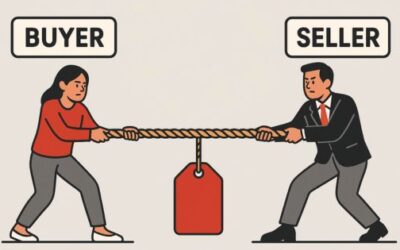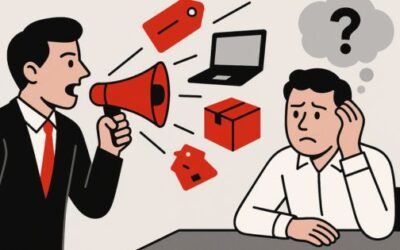Cold outreach is hard. But when you utilize problem-centric Gap Selling, things get a lot easier. Welcome to Gap Selling In Practice, Tip #2.
Me again, with a simple question – When you think of Gap Selling, what comes to mind?
Now, I’d never actually ask this question in discovery, it’s too “us” focused.
But typically, people think of discovery, or buyer persona expertise, or simply Keenan & his content.
If you didn’t know it already… The core principles of Gap Selling selling apply to pretty much every aspect of revenue.
Yes, I said every aspect of revenue. This includes marketing, prospecting, selling, cross-selling & up-selling… the list goes on.
For now, let’s focus on how it applies to prospecting.
Gap Selling Sales Training Tip #2:
Concept: Problem-centricity in prospecting – Talking about the problems you solve vs. the product you sell
Why?
In case you hadn’t noticed, cold outreach has gotten harder and harder. Who’s to thank?
SEPs? Auto-dialers? People calling about your car warranty?
Probably all of the above.
But bear with me for a sec, because we need to examine another concept before diving in here.
The buyer’s journey.
At a high level, it consists of three main stages:
Awareness >> Consideration >> Decision
You’ve probably heard the stat that ~70% of the buyer’s journey is completed by the time they fill out a form on your website.
And when you’re reaching out completely cold, the odds you find a buyer who’s actively started the buyer’s journey are very low. It does happen occasionally, and if you have a strong brand (thank your marketers), you’re more likely to get your foot in the door.
But how do you start someone on the buyer’s journey if they haven’t even reached the awareness stage?
Find a problem worth solving.
Problem-Centric vs. Product-Centric
Most cold outreach focuses on the product and what it can do.
Which makes sense, because most people view the awareness stage of the buyer’s journey at the product level, instead of the problem level.
Know the problems you solve, be problem-centric, find the prospects that know they have them, or make them aware of a problem they may not have known they had.
The beauty in this simple concept is three-fold:
– If you find a problem, you give the discovery a launchpad.
– You’re not speaking with anyone who doesn’t have a problem you can solve (i.e. more qualified conversations).
[Quick Sidebar: I don’t know the stats on it, but I’d imagine campaigns like “Get a free pair of AirPods for taking a demo!” have a TERRIBLE conversion rate.]
– Meeting hold rates are improved because it’s no longer a meeting to see a “cool new toy,” it’s a meeting to discuss whether the problem they have is ultimately worth solving
Putting it into practice:
Before I write any new prospecting sequence/cadence, I make a buyer persona specific PIC (Problem Identification Chart).
In each email, I focus on one specific business problem. My goal is never to book a meeting on the first email, it’s to start a conversation and see whether or not we can help them.
In each cold call, I focus on all three in what we call a “Problem Pitch”
The Problem Pitch structure depends on persona + trigger, but sounds a bit like this:
“Reason for my call is I noticed *Trigger*, and typically when that happens, *Personas* bring us in because they start struggling with Problem A, B, C. Curious if you’re seeing any of these problems since *trigger* or if I’m way out of left field here?”
Triggers are extremely powerful when you couple them with business problems instead of features and benefits.
If you want to learn more about triggers and get some ideas… you need to check out Flip the Script’s Comprehensive Encyclopedia of Sales Plays…
Happy hunting!
If you or your organization want to start becoming problem-centric sellers, click here to schedule a call with our sales team.




0 Comments